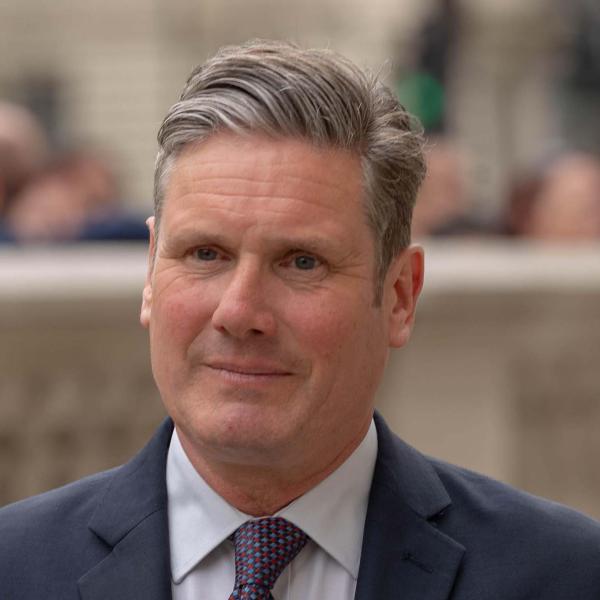Paul Johnson, IFS Director, said:
“The Conservatives have promised some £17 billion per year of tax cuts, and a big hike in defence spending. That is supposedly funded by reducing the projected welfare bill by £12 billion; cracking down on tax avoidance and evasion; and saving billions from cutting civil service numbers, reducing spending on management consultants, and “quango efficiencies”. Those are definite giveaways paid for by uncertain, unspecific and apparently victimless savings. Forgive a degree of scepticism.
Hands up though. I was equally sceptical about promises of delivering £12 billion of welfare savings in the 2015 manifesto. Via some serious cuts, including four years of freezes, those savings were broadly delivered, albeit two years later than that manifesto had claimed. And there is a real challenge this time. Spending on health-related benefits has ballooned - a doubling in the number of new claims for disability benefits each month compared with 2019.
So it is right to identify this as a challenge to address. The trouble is the policies that have been spelt out are not up to the challenge of saving £12 billion a year. Some have already been announced and included in the official fiscal forecasts; others are unlikely to deliver sizeable savings on the timescale that the Conservatives claim. The hope seems to be that, since spending on disability benefits is rising rapidly, one can simply “reform disability benefits” and hold spending down. But halving the number of people that successfully apply for disability benefits from its current level would not be easy and would need definite, clear policies that require difficult decisions. These are not stated.
The biggest tax cut promised is another 2 percentage points off the main rate of National Insurance contributions for employees, coming at a cost of more than £10 billion a year, and worth some £450 a year to someone on average earnings of around £35,000. But note they would also lose £150 from continued freezes to income tax and NICs thresholds. The promise to abolish the main rate of self-employed NICs altogether would doubtless be welcomed by the self-employed but would further entrench the tax advantages of self-employment over employment.
What the manifesto did not tell us was where the £10 to £20 billion of cuts to spending on unprotected public services, as implied by the March Budget, might come from. Indeed the billions of savings from cutting civil service numbers and the rest noted in the manifesto have been earmarked to fund the additional defence spending, and would come on top of those cuts. This manifesto remains silent on the wider problems facing core public services - and if you think those civil servants, management consultants and quangos were delivering anything, these plans imply an even tougher time than set out back in March.”
Below we outline an initial response from IFS researchers on the Conservative party’s manifesto. We take a number of policy areas by turn but this is not a full assessment.
Further analysis will be published over the next two weeks.
Personal tax policies
Tom Wernham, a Research Economist at IFS, said:
“The biggest tax policy is the pledge to cut the main rate of National Insurance contributions from 8% to 6% and to abolish the main rate of self-employed NICs. Combining this change with other changes since 2019, including the ongoing freeze to tax thresholds, most workers would be paying less tax by the end of the next parliament than they would have been paying under an unreformed 2019 system. This includes employees earning between about £24,000 and £62,000 per year (approximately above the bottom-third but not in the top ten per cent of earners) and virtually all self-employed people who earn enough to pay tax.
Abolishing the main rate of self-employed NICs would increase the extent to which the tax system favours self-employment over employment. Under the proposed changes, a basic-rate taxpayer would face a marginal tax rate of 20% if they are self-employed vs 35% if they are an employee (and have their income subject to employee and employer NICs). Increasing the tax advantage for self-employment relative to employment is a move in the wrong direction. Preferential rates for the self-employed are unfair and not well targeted at boosting entrepreneurship.”
- The 2 percentage point employee NICs cut is worth £450 per year to an employee earning £35,000 (mean average earnings), whilst a self-employed worker with the same earnings would gain £1,350 from the abolition of the main rate. These cuts would, however, come alongside already-planned freezes to income tax and NICs thresholds until 2027-28 which will push taxes up. Taken together, these policies would leave taxes £260 lower for an employee on £35,000, and £1,230 lower for a self-employed worker on the same amount in 2028-29, relative to today.
- Incorporating the effect of tax freezes and NICs cuts that have already happened since 2019-20, by 2029-30 taxes for an employee on £35,000 would be cut by £660, compared to £1,600 for an equally well-paid self-employed worker.
Employees earning between £24,000 and £62,000 - who make up about 57% of employees - would pay less tax overall as a result of reforms between 2019-20 and 2029-30. Lower-earning workers earning enough to pay tax benefit less from the cuts to the NICs rate, but are hit just as hard by the freezes to thresholds. An employee working full-time on the minimum wage would see taxes increase by £240 from 2019–20 to 2029–30, while a self-employed worker earning the same would see a £300 tax cut. - Pensioners do not pay NICs so do not benefit from the cuts to those rates. But they would benefit from the proposal to uprate their income tax personal allowance in line with the triple lock. By 2029–30, this would be expected to cut their income tax by £130 per year. However, that same allowance has been frozen since 2019, which means they would still be paying more tax at the end of the next parliament than they were at the beginning of the last. A pensioner paying the basic rate of tax would be paying £490 a year more in tax in 2029–30 than under the 2019-20 tax system.
The other main tax changes proposed in the manifesto relate to housing, discussed below.
Tax measures ruled out
Stuart Adam, Senior Economist at IFS, said:
“The worst thing about the Conservatives’ proposals on tax is what they are ruling out.
Not only are they tying their hands by promising not to increase the rates of income tax or VAT or to increase corporation tax, capital gains tax, stamp duty land tax or any tax on pension saving. Not only are they promising to keep some of the silliest tax reliefs we have, such as business asset disposal relief in capital gains tax and business & agricultural property reliefs in inheritance tax. They are promising not to make essential and urgent reforms that should be at the top of any serious party’s to-do list. Council tax in England is based on valuations that are already 33 years out of date, with the majority of properties now effectively in the wrong band; not revaluing would entrench the unfairness in a system which must eventually be unsustainable. And with petrol and diesel cars due to disappear from the roads - and fuel duty revenues with them - we desperately need a plan for how to tax electric vehicles in the long run; Conservative ministers have repeatedly said they want to replace the lost fuel duty revenue with other taxes on motoring, but in promising not to introduce per-mile road pricing they are now ruling out the best option.
These are clearly politically driven pledges. They are not the promises of a party that is serious about reforming the tax system in ways that would boost growth or remove inequities. It is perfectly reasonable for a party to want to cut taxes rather than increase them. But the pledges in this manifesto would also rule out vast swathes of sensible structural reform of the tax system. The Conservatives have missed opportunities to reform tax in the last 14 years. They are making clear that they would continue that trend by essentially preserving the current structure of the tax system in aspic, even as the world moves on around it. It is hard to believe that the way we currently levy taxes is the best we can do.”
Working-age benefits
Tom Waters, Associate Director at IFS, said:
“The most eye-catching part of the plan for benefits is a pledge to cut £12 billion per year from the projected welfare budget. The reason for this pledge is clear: the welfare budget has increased substantially as the numbers claiming incapacity and disability benefits have risen. The number of claimants of health-related benefits has increased rapidly since the pandemic from 3.2 million in 2019 to 4.2 million today, and is set to continue rising to 5.4 million in 2028-29 (taking spending from £35.6 billion in 2019-20 to £63.7 billion in 2028-29, in today’s prices).The policies announced to deliver this further £12 billion cut, however, are not remotely up to the challenge. Some have already been announced and included in the official fiscal forecasts; others are just small.
Health-related benefit spending has been rising rapidly since the pandemic and is set to cause an increasingly painful fiscal headache. But the kind of cut the Conservatives are mooting would be difficult to achieve and they have outlined very little in the way of concrete plans. To save £12 billion this way would involve getting 1 million people (19% of the total) off health-related benefits. Or it could mean applying big cuts to existing claimants, requiring something like a £2,200 cut per claimant per year.”
- To cut £12 billion off welfare, the Conservatives have outlined a number of policies. Some were previously announced by the government and have therefore already been incorporated by the OBR into their forecasts, and so cannot be relied upon for further savings to pay for further tax cuts. Others, such as accelerating the rollout of universal credit, are simply small.
- The one potentially larger policy is “reforming disability benefits”. The background here is that the number of claimants of health-related benefits has rapidly increased since the pandemic from 3.2 million in 2019 to 4.2 million today, and is set to continue rising to 5.4 million in 2028-29 (taking spending from £35.6 billion in 2019-20 to £63.7 billion in 2028-29, in today’s prices). The central premise of the plan seems to be that, since health-related benefit spending is rising so fast, one ought to be able to make huge savings by returning expenditure to its pre-pandemic level or even just holding it at its current level. But that is far easier said than done. Before the pandemic, each month 20,000 new people began a disability benefit award; that figure is now 40,000, and shows no sign of slowing down.
- To make a real dent in spending on disability benefits, one can imagine two basic approaches. First, the government could try to reduce the number of people on these benefits, probably by making the assessment much more stringent to try to reduce that 40,000 figure. To save £12 billion this way would involve getting 1 million people (19% of the total) off health-related benefits. Second, they could apply big cuts to existing claimants, requiring something like a £2,200 cut per claimant per year. However, the manifesto contains very little information on what kind of policy the Conservatives have in mind. It is difficult to have much confidence in the £12 billion goal.
- Moreover, experience from previous reforms has shown that hoped-for savings have often failed to materialise. The Coalition government said that its reform to disability benefits would reduce claimant numbers, and the amount spent, by one-fifth - and the OBR now judges that “a reform intended to reduce spending has actually increased it”.
- The other key welfare policy in the manifesto was a reform to the high-income child benefit charge (HICBC). The reform would go some way to fixing a bizarre system, but would be administratively challenging.
Spending on public services
Bee Boileau, research economist at IFS, said:
“The Conservative manifesto left existing plans for overall spending levels on public services after the election virtually unchanged. By 2029–30, total spending plans would be topped up by £500 million, less than one-tenth of one per cent of total departmental spending. As we have previously shown, these plans imply large real-terms cuts to day-to-day spending in a range of unprotected areas, many of which are still at lower real funding levels than in 2010. Delivering these cuts – to areas including further education, prisons, and criminal courts – would not be consistent with a desire to maintain current levels of service provision, let alone delivering improvements. This is particularly the case since a range of cuts identified in the Conservative Party manifesto have been earmarked to fund higher defence spending, so cannot now be used to top up spending plans elsewhere.”
- We still have almost no detail on spending plans by department over the next few years, so – while cuts are still implied by the fiscal arithmetic – the Conservatives have largely remained silent on where these will fall.
- The manifesto promised to increase total defence spending to 2.5% of GDP by 2030. This implies that real-terms total spending by the Ministry of Defence would rise by around 3% each year on average between 2024–25 and 2028–29.
- On a set of realistic assumptions about protection for the NHS, defence and aid, schools, and childcare spending, the overall increase in day-to-day spending on public services of around 1% each year after this year implied cuts of the order of £10 to £20 billion in day-to-day spending for unprotected departments in 2028–29 at the time of the Spring Budget. As the Conservative Party manifesto pledges only to protect schools budgets in per pupil terms, falling pupil numbers mean it is possible they could cut overall schools spending by £3½ billion a year in order to reduce the cuts faced by other departments.
- Manifesto promises to increase spending, primarily on defence, have been funded largely through cuts to the Civil Service headcount, consultancy spending, and ‘quango efficiencies’, cutting down on options for making the implied further cuts to funding for unprotected services.
- It continues to be the case that investment spending is set to fall sharply in real terms and as a share of national income after this year, as was previously planned. As with day-to-day spending, it remains unclear exactly where cuts to investment spending will fall, since plans have not been laid out on a departmental basis.
Health and social care
George Stoye, Associate Director at IFS said:
“The Conservative manifesto promises to restore NHS performance to constitutional targets, many of which have not been met for almost a decade. This would be a major turnaround in NHS performance across a range of services, including elective and emergency waiting times. The manifesto also reaffirmed the party’s commitment to implement the NHS long-term workforce plan. Delivering such promises will be very expensive, requiring real-terms annual increases in spending far above the sort we have seen over the last 14 years. However, beyond an almost meaningless commitment to increase NHS spending above inflation each year (it always gets more than inflation), there was a striking lack of detail on what financial resources will be made available to the NHS over the next parliament to deliver these commitments. The absence of spending plans makes it impossible to judge whether achieving such a massive task in one parliament is feasible.”
- The Conservatives do not set out an overall spending plan for health and social care in England. Instead they commit to increasing health spending above inflation each year. This is not a major commitment: historically, health spending has almost always risen faster than inflation. In fact, in only 5 years between the mid-1950s and the pandemic did UK health spending fail to keep up with inflation.
- The manifesto sets out £1.2 billion (cash terms) in net additional spending per year by 2029-30 for specific pledges. This covers previously announced policies including an expansion of the role of pharmacists, building or upgrading 250 GP practices and increasing mental health spending. Additional spending on these areas (£1.7 billion by 2029-30) is partially offset by a planned reduction in NHS managers, intended to save £550 million per year by 2029-30. But this risks being counterproductive and ultimately worsening productivity: relative to other healthcare systems, the NHS already has fewer managers.
- The manifesto reiterates the government’s commitment to implementing the NHS workforce plan. It also promises substantial improvements in NHS performance by returning to constitutional standards, many of which have not been met for a decade. Achieving these promises will require the NHS budget to grow substantially faster than inflation over the next parliament, almost certainly needing growth of upwards of 3% above inflation each year. This is much faster than the growth in health spending over the past 14 years, and alongside commitments to certain other services (such as defence and childcare) would require cuts to many ‘unprotected’ services.
- The Conservatives also commit to rolling out the delayed cap-and-floor adult social care system from October 2025. This would limit the amount anyone has to pay for personal care services over their lifetime at £86,000 irrespective of their income and assets (the ‘cap’) and increase means-test thresholds so those with up to £100,000 in assets get some support even if they have not yet reached the cap (the ‘floor’). This reform would help provide greater insurance to those facing the greatest social care costs. But funding previously set aside for this in the 2021 Spending Review has been redeployed to meet existing social care pressures and absorbed into the overall tight spending envelope the Conservatives are sticking to. With no funding in the manifesto for this policy, paying for this cap-and-floor would therefore further deepen cuts to other unprotected service areas.
Housing
David Phillips, Associate Director at IFS, said:
“Housing has emerged as a big issue in this election campaign. As well as pledges on building new homes the Conservatives are proposing a set of demand-side measures to boost home-ownership: temporary cuts to stamp duty for first-time buyers would be made permanent, Help to Buy schemes reintroduced and extended, and there’d be a temporary capital gains tax exemption for landlords selling to their tenants. These would help some people to become first-time buyers. But with supply of housing constrained, they would also be likely to push up prices. To the extent that the supply of housing cannot expand faster in response to this increased demand, these policies cannot make housing more affordable overall: increased affordability for first-time buyers would be matched by reduced affordability for those looking to upsize and the majority of renters still not in a position to buy. The winners from pushing up house prices would be housing developers and existing owners not looking to upsize.”
- Making permanent the temporary increase in stamp duty land tax thresholds for first-time buyers in England and Northern Ireland would cost £600 million a year by the end of the next parliament. The main beneficiaries would be first-time buyers in London and the South of England, buying properties between £300,000 and £625,000: much lower property prices in Northern Ireland and the North of England mean a large majority of first-time buyers in those areas would be below the £300,000 threshold that would otherwise apply from April 2025.
- A temporary two-year capital gains tax exemption for landlords selling to their existing tenants would help some tenants to buy their first home. But it would do so in a particularly strange and distortionary way. It would mean a bias towards tenants buying the particular property they were living in, rather than another that might be more suitable and they might prefer. It would encourage landlords to sell, and tenants to buy, within the two-year window even if they would otherwise prefer to do so later. And the incentives would be stronger for those properties that have risen a lot in value since the landlord acquired them compared to those that have been acquired more recently or whose value has risen less. This is not a well-designed way to make owner-occupation more affordable.
- The Conservatives have also pledged to introduce a new 3-year Help to Buy equity loan scheme (previous iterations of which ran until 2023) and to continue the current Help to Buy mortgage guarantee scheme (due to expire in 2025).
Young people
Imran Tahir, Research Economist at IFS, said:
“With 15% of 18- to 24-year-olds currently not in education, employment or training, providing genuinely attractive post-school options for all young people is certainly the right aim to have. There are big and genuinely ambitious plans in the Conservative Party manifesto - more apprenticeships, fewer degree courses, a whole new post-16 qualifications framework and National Service for 18-year-olds. Each of these would be a major reform in its own right. But the delivery of each also brings big challenges. And delivering all of these plans at the same time risks adding yet more instability and churn to the already-turbulent post-16 education system.”
- The focus of education policy commitments in this manifesto is squarely on young people aged 16 and up. Around 4% of 16- and 17-year-olds - and 15% of those aged 18 to 24 - are not currently in education, employment or training, the highest since at least 2015. The Conservative Party proposes three big reforms for this age group: wholesale reform of qualifications, new requirements for 18-year-olds to complete National Service with the military or in community volunteering, and a substantial shift away from higher education and towards apprenticeships.
- The Advanced British Standard would replace both A-levels and T-levels - scrapping a new set of qualifications which were introduced just 4 years ago by the current government, and are not yet even fully rolled out. There would be some advantages to this new, baccalaureate-style qualification, chief among them a 15% increase in teaching time compared to a student currently taking 3 A-levels, and a broader post-16 curriculum that would bring England more in line with other countries. But this would be at least the eighth substantial reform to post-16 vocational education since 2010. This instability makes it harder for employers to understand the value of these qualifications and risks hampering efforts to deliver ‘parity of esteem’ for vocational education.
- The objective of the government’s National Service plan remains unclear: is the aim to increase military readiness and shore up public services, or to improve young people’s skills? The answer to that question should shape its design. Around £1.5 billion of the £2.5-billion cost would come from winding up the UK Shared Prosperity Fund (UKSPF), which is the main pot of funding for levelling up, particularly hitting Wales, Cornwall and the North East of England.
- Previously-announced plans to create 100,000 more apprenticeships in England each year would just about reverse the 13% decline in apprenticeship numbers since 2016, and plans to pay for it by scrapping courses taken by one in eight undergraduates are highly uncertain.
- The Conservatives’ plans imply that international student numbers will remain high. Raising £200 million a year from ending the student discount on the Immigration Health Surcharge implies 800,000 international students in the UK are expected to pay the surcharge. With more than a fifth of all university income now coming from tuition fees paid by international students, the health of university finances will depend on whether fee income holds up despite these higher charges and an already-announced tightening of visa rules.
Schools and early years
Luke Sibieta, IFS Research Fellow, said:
“Since 2019, the government has provided an extra £6 billion per year in school funding, which has reversed past cuts and brought spending per pupil back to 2010 levels in real terms. In their manifesto, the Conservatives commit to at least protecting day-to-day spending per pupil at this level in real terms. While this is billed as protection, with pupil numbers falling by 400,000 up to 2028, freezing spending per pupil in real terms would, in practice, mean a £3½ billion cut to total school spending. A reduction in the overall schools budget on this scale has not been delivered since the mid-1970s, and were it to be delivered it would almost certainly require a reduction in the workforce and potentially school closures too.”
- The Conservatives have committed to protect day-to-day school spending per pupil in real terms. Doing the minimum implied by this commitment would mean that per-pupil spending in 2029 was at the same real-terms level as it was in 2010 - nearly two decades with no growth in school resources per pupil.
- Falling pupil numbers mean that a freeze in per-pupil spending translates into a 6% cut (£3.5 billion) in the total schools budget by 2028. Delivering such cuts to total spending could be challenging from a practical perspective; it would almost certainly require workforce reductions and/or school closures.
- The Conservatives have pledged to deliver a Family Hub in every Local Authority, at an estimated cost of £120 million a year. This would extend funding for the existing programme, which is set to expire in 2025. But it is a small pot to cover the cost of running at least 500 centres - a maximum of £240,000 per centre is considerably less generous than any stage of the Sure Start programme prior to 2010, and those resources will be spread even more thinly because Family Hubs will serve children aged 0 to 19, not just the first five years of life.
- The current government had already promised, and legislated for, the largest-ever expansion of support for childcare in England.This is set to increase spending on free childcare by £4 billion by 2026.























